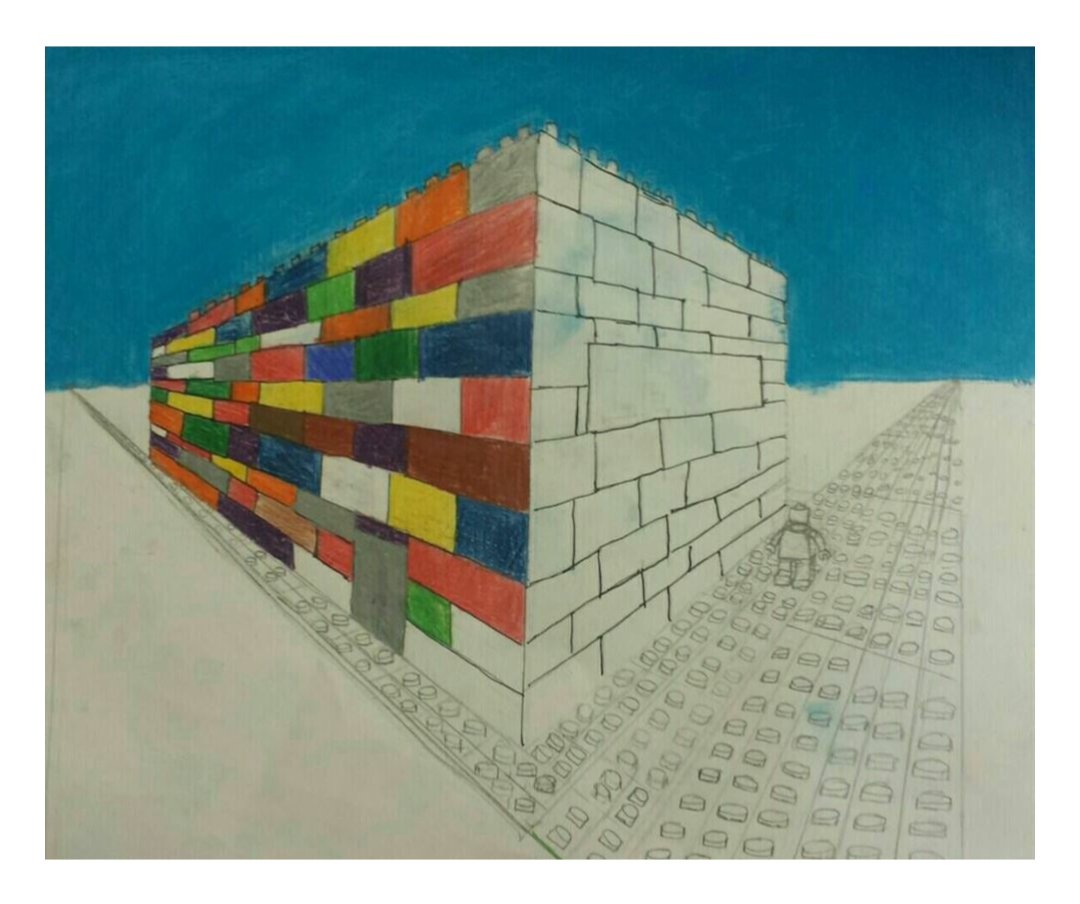
One point perspective lettering is a fun and easy way to get started with perspective drawing and an element you can apply to other works of art! Check out the instructions and video below to create your own one point perspective words!
What is perspective drawing? When we look at something we see things a little differently then how they actually are – for example, we know that the edges of a road are parallel, but if we’re looking down the road, the edges seem to eventually come together and vanish at a certain point in the distance, making the road appear to get smaller and smaller the further away it gets. The same can be said if you look at houses lined up on a street – the house you’re closest to appears to be largest and the houses way out in the distance appear to be smaller, even though if you were to walk up to the houses in the distance, they would actually be the same size as the house that you’re closest to now! So in artwork when we want to achieve a realistic or dimensional look, if we’re able to create the appearance of what we see, rather than what we know, we can make a more convincing piece of art.


VANISHING POINT: The vanishing point is that point in the distance where, in the example above, the edges of the road seem to disappear. In one point perspective drawing we only have one vanishing point – so we’re drawing objects or scenes directly from the front, or their true shape. For example (in the photos below) a cube with one point perspective will show a square at the front, whereas two point perspective will show the cube with the corner edge closest to you, making us able to see two sides of the cube, which each require their own vanishing point far off in the distance.


EYE LEVEL LINE: We also use an eye level line (or horizon line) in perspective drawing. The eye level line is the height where your eye level is – we can determine if objects in your drawing are at eye level, above eye level, or below eye level, simply by drawing your objects on the eye level line, above or below the eye level line.

Once you understand one point perspective it’s a lot easier to understand two point and multiple point perspective drawing!
In the video below I use one point perspective to make a word look 3D. You could also do your name or initials or apply the same method to geometric shapes! This is also only one way one point perspective can be used – you can also use one point perspective to create a landscape and other works of art too!
Ideas & Tips:
- You can be more precise and measure out the area where your letters will be placed so they’re even in size!
- If you have a longer word or your letters are closer together – Start with the letter that’s closest to the vanishing point when drawing the lines from the letter back to the vanishing point. Then work out from that letter. Letters that are closer together will often overlap when drawing the lines to the vanishing point. (For example the ‘E’ in ‘DREAM’ below overlaps the ‘R’ and the ‘R’ overlaps the ‘D’).
- Try changing where your eye level line and/or vanishing point are on your paper to create different angels.
- Stagger your letters so you have some at, above, and below, eye level!
- Instead of letters you can try the same method with geometric shapes.





Some Student examples of one & two point perspective drawing!





Take a look at other projects you can do at home as well as upcoming lessons, both in person & virtual!



